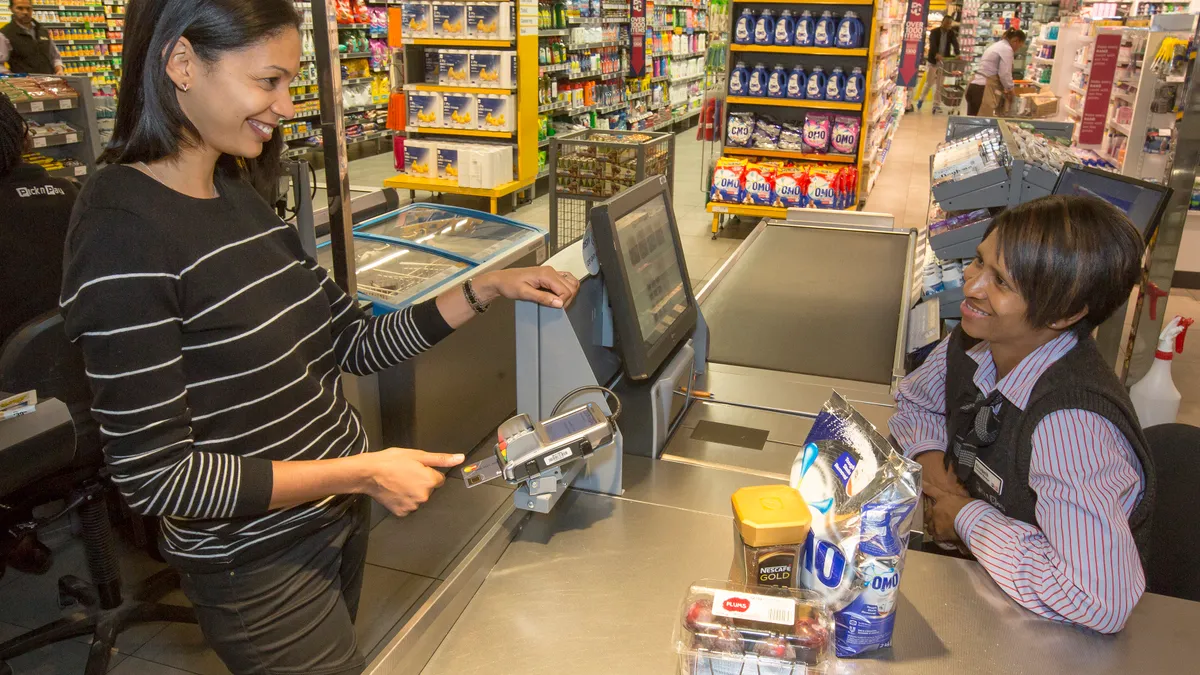Dive Brief:
-
Mastercard announced it has been testing a payment card that leverages biometric technology for extra transaction security, in combination with existing EMV chip technology, according to a company press release.
-
The technology involved allows a fingerprint to be stored on an EMV card. Merchants would be able to use existing EMV card terminal infrastructure to accept payments on such cards. The company recently conducted two separate trials of biometric cards in South Africa with Pick n Pay, a leading supermarket retailer, and with Absa Bank, a subsidiary of Barclays Africa.
-
Upon registration, cardholders' fingerprints would be converted into an encrypted digital template that is stored on the card. At the point-of-sale, the cardholder would dip the card into a retailer’s terminal while placing a finger on the embedded sensor, which would verify their identity and approve the transaction — all without the card ever leaving the consumer’s hand.
Dive Insight:
At this time last year, we were lamenting the lack of progress that had been made with the implementation of EMV chip card payments across merchants. Now a year later, Mastercard is already set to push beyond EMV by adding another layer of security to EMV cards, terminals and transactions.
So, is the EMV era over already? Some observers may suggest the EMV transition was a big waste, if just a year later another security technology is essentially piggybacking on EMV cards. However, EMV was never intended to be the ultimate and perfect method for protecting consumers from data theft. Most security experts will tell you that the best security strategy is a multi-layered one. Load that quiver full of arrows because you just might need all of them.
Biometrics very quickly, perhaps surprisingly quickly, has become a factor in payments security. Both Alibaba and Mastercard acquired up-and-coming biometrics technology developers in recent months, and Mastercard last fall began rolling out biometric fingerprint scanning for mobile payments. Figuring out how to integrate the technology with existing payment cards without making it awkward to use may be a challenge, but it makes great sense to try to conquer that challenge. With EMV payment terminal able to process fingerprint cards, we also should be looking at a much easier transition than the EMV transition (We know we're not alone in believing merchants wouldn't stand for another en masse terminal upgrade program.)
However, the other important thing to remember about integrating biometrics with existing payment cards is that Mastercard has taken only a small step toward bringing these cards into wide usage — just two trials with two merchants in South Africa. We're guessing there probably will be more trials to come on other continents, and it could be a while before cardholders everywhere are given the chance to register for biometric authentication. When we do see it on a broader basis, cardholders will only be better off for having it — just as they are better off now for having EMV chip cards.














